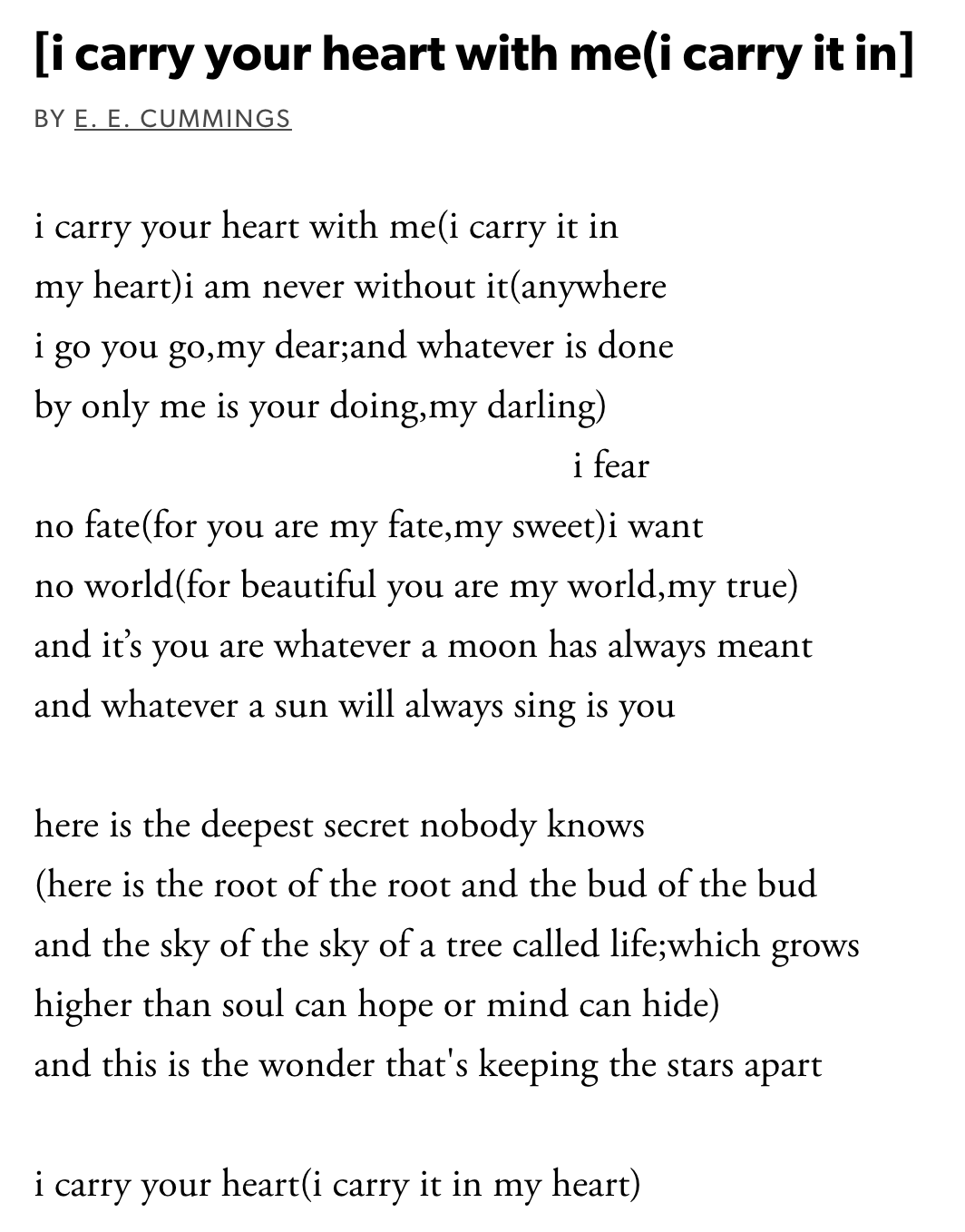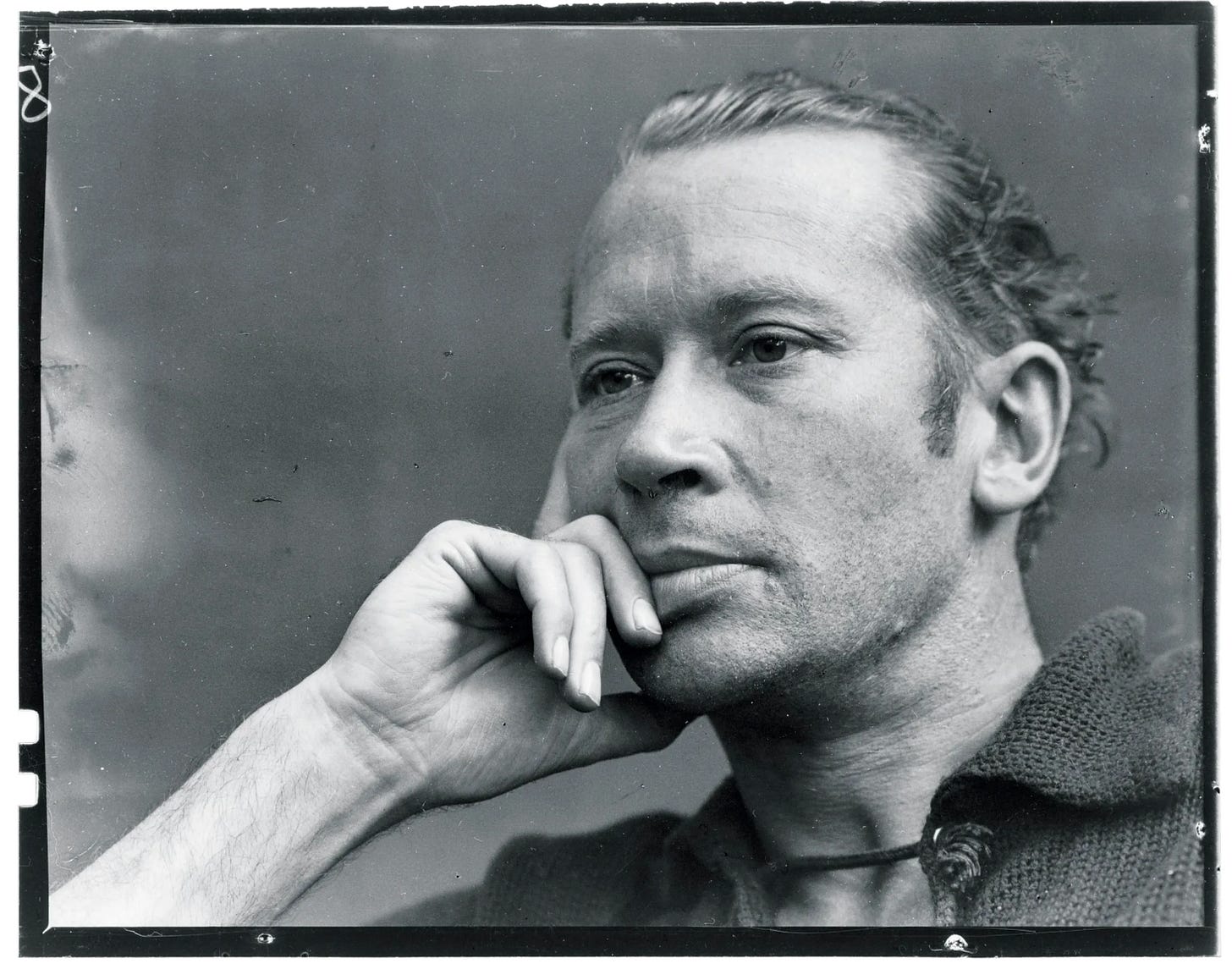The Spirit of e.e. cummings
In cubism, we trust.
Breaking the Rules to Reveal Truth
When I first read e.e. cummings he expanded my mind as to what the written form could be, in particular syntax within poetry that had meaning, and a life of its own.
e.e. cummings remains a towering figure in modern poetry, a poet who unraveled language and reassembled it into something entirely his own. His work defied convention—abandoning punctuation, bending syntax, and using typography to make each poem a living piece of art.
Born in 1894, Cummings was not just a poet but an artist in every sense. Influenced by the modernist movements of his time, he infused his poetry with the visual sensibilities of Cubism. Much like Picasso and Braque, he fragmented and reconfigured his subjects—whether they were emotions, ideas, or observations—into kaleidoscopic forms.
Cummings did not just write about experiences; he reconstructed them, forcing his readers to engage, interpret, and feel in new ways. His work wasn’t easy, but it was electric.
Cubism and the Poetry of Perspective
Cubism sought to dismantle the singular perspective, presenting objects simultaneously from multiple angles. Cummings adopted this approach, using it to reflect the fragmented and multifaceted nature of human experience.
Consider his poem [i carry your heart with me(i carry it in], where language bends and flows in unexpected ways, mirroring the cubist impulse to break apart and reassemble form. The poem’s structure, with its parentheticals and fluid movement, creates an effect of layered intimacy—an emotional dimension that expands beyond the limits of traditional verse.
Cummings writes:
here is the deepest secret nobody knows
(here is the root of the root and the bud of the bud
and the sky of the sky of a tree called life;which grows
higher than soul can hope or mind can hide)
The layering of imagery mirrors cubist composition—each line fragmenting and expanding upon the last, interweaving emotional depth with visual movement. The lack of punctuation allows the poem to flow seamlessly, reinforcing the notion that love transcends conventional boundaries.
His poetry asks: What happens when you see the world not as a linear narrative, but as a fragmented whole?
Why e.e. cummings Still Matters
Cummings’ poetry is timeless because it doesn’t just describe—it transforms. His work is a reminder that language is not static; it is alive, elastic, and capable of capturing the complexity of our inner worlds.
I’ve tried to carry forward this spirit. My poem doesn’t just tell a story—it invites you to experience it through shifting perspectives, fractured moments, and layered meanings.
Introducing A Cubist Christmas
Inspired by the spirit of Cummings and the artistic lens of Cubism, my poem A Cubist Christmas plays with structure and perspective to explore love, memory, and transformation. It reflects on those fractured yet cohesive moments that define our lives—moments where time collapses, belief shifts, and love persists.
In A Cubist Christmas, the holiday is seen through the fragmented lens of memory and perception: the first Christmas without childhood belief, the relentless growth of bamboo, and the surreal clarity of mushroom-induced introspection.
Through these moments, the poem examines the abstract shapes of love and time—how they twist, shift, and yet always remain present.
If you’re curious about how a tree becomes an eye or how mushrooms inspire lucidity, keep reading.
A Cubist Christmas
For Christmas,
she bought a collection of cubist poems
titled Don’t Forget To Love Me.
How could I?
In all the rain
I loved her—constant
In all our changes
I loved her—always
In the bamboo—
surprising <exclamation mark>,
their voracious growth
each morning demonstrating
an opportunity to be reborn.
It was our first
(Christ)mas
where the children didn’t believe
It was our best.
In the recent summer,
I’d grown mushrooms
To find a lucidity I’d missed
Fractal illusions miraged (degarim) on the horizon
horizon
TimeandDistanceBecame
A - B - S - T - R - A - C - T
The a l l
Seeing
E (Y) E
paraded proudly on top of our T
R
E
E
Thank you for taking this journey into the cubist world of poetry. I hope A Cubist Christmas leaves you with new ways to see love, memory, and the possibilities of transformation.
Let me know your thoughts in the comments, and may you always find beauty in the fragments.




ee cummings is one of my all time favs. thanks for sharing!
This is evocative e.e. Would be proud